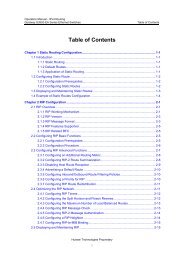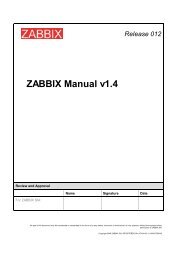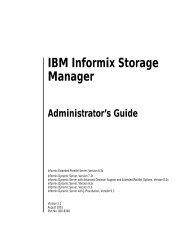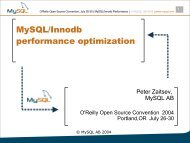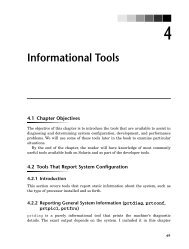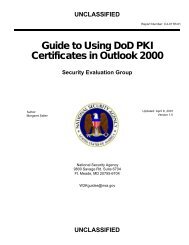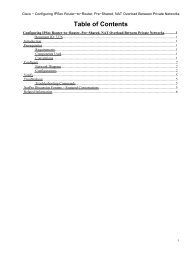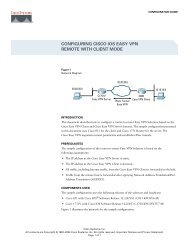OpenVPN Access Server System Administrator Guide
OpenVPN Access Server System Administrator Guide
OpenVPN Access Server System Administrator Guide
You also want an ePaper? Increase the reach of your titles
YUMPU automatically turns print PDFs into web optimized ePapers that Google loves.
If a user is disabled or deleted from the user authentication database, the user‟s VPN client<br />
becomes implicitly disabled due to the fact that the user can no longer authenticate successfully<br />
when the VPN client connects to the <strong>OpenVPN</strong> server. Thus, there is no need for the administrator<br />
to delete a user‟s configuration files on the <strong>Access</strong> server.<br />
Also note that each generated client configuration is user-locked – it can only be used by that<br />
particular user. So a user that successfully signs on to the Connect Client cannot enable a different<br />
user to access the VPN simply by giving away the client configuration and/or Windows installer<br />
file (since the different user will not have the required user credentials). 2<br />
2.5 Virtual VPN Subnet Configuration<br />
When deployed, the <strong>Access</strong> <strong>Server</strong> creates an independent, virtual VPN IP subnet on which each of<br />
the connected VPN clients is assigned an IP address 3 . If access to private networks is enabled by<br />
the administrator, the <strong>Access</strong> <strong>Server</strong> will also set up a NAT or internal routing system to allow<br />
VPN clients from the VPN subnet to reach the private network via the server‟s private IP address.<br />
An illustration of this system is shown in Figure 6.<br />
Figure 6: <strong>OpenVPN</strong> <strong>Access</strong> <strong>Server</strong> Virtual VPN Subnet Configuration<br />
2 As of version 1.2.0, particular users can have the “auto-login” permission enabled (see the User<br />
Permissions page) which allows users to connect to the VPN without entering a password.<br />
3 As of version 1.2.0, the <strong>Access</strong> <strong>Server</strong> may configure two virtual networks: one for “static” VPN<br />
IP addresses (i.e., the admin assigns specific VPN IP addresses to particular users) and one for<br />
“dynamic” VPN IP addresses.<br />
<strong>OpenVPN</strong> <strong>Access</strong> <strong>Server</strong> <strong>System</strong> <strong>Administrator</strong> <strong>Guide</strong><br />
9




